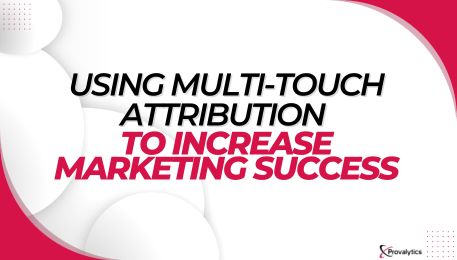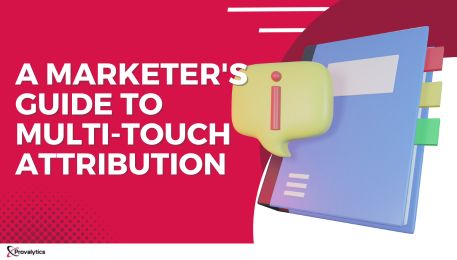Using Multi-Touch Attribution to Increase Marketing Success
Understanding the success of your initiatives and tweaking them for better outcomes is critical in the ever-changing world of digital marketing. Multi-touch attribution is one method for accomplishing this. The importance of multi-touch attribution stems from its potential to improve marketers’ plans and performance by offering useful insights into customer journeys and enabling optimized campaign management.
Multi-touch attribution is a data-driven marketing strategy that attempts to attribute monetary value to numerous touchpoints or interactions a customer has with a brand or product prior to making a purchase. These touchpoints can include everything from influencer interactions to social media marketing and Google search clicks. The goal is to learn which marketing channels and campaigns contribute the most to conversions and customer acquisition.

Understanding the Customer Journey
Consider a simplified customer journey in which a customer’s path to conversion involves many encounters across different channels, each with its own cost:
- The customer’s journey begins with an influencer engagement costing $1.
- Eight days later, they encounter an Instagram ad, incurring a cost of $1.50.
- Seven days after that, a Google ad interaction costs $0.50.
- Finally, two days later, the customer directly engages and makes a purchase.
This example exemplifies the complexities of customer journeys, in which numerous channels play distinct roles at different phases. Understanding these relationships is essential for improving marketing budgets and strategies.
The Three Interaction Phases
Multi-touch attribution divides customer interactions into three phases:
- Upper Funnel Interaction (Initializer): This is the awareness phase, where customers become familiar with your brand or product.
- Mid-Funnel Interaction (Holder): This phase focuses on product orientation, where potential customers explore your offerings.
- Lower Funnel Interaction (Closer): Here, customers are on the verge of conversion, typically in the checkout phase.
Models like as the IHC (Initializer, Holder, Closer) model discussed in the transcript are used for multi-touch attribution. This approach assesses the effectiveness of each campaign or touchpoint in affecting one of the three phases of engagement. Marketers can then evaluate performance at various levels, such as keywords, Google ads, or influencer interactions, by taking into account data such as sessions, costs, influence, and conversions.
Benefits of Multi-Touch Attribution
The advantages of multi-touch attribution are multifaceted:
- Cost Reduction: By identifying underperforming campaigns or channels, marketers can reallocate budgets more effectively, reducing wasteful spending.
- Cross-Channel Insights: Multi-touch attribution provides a holistic view of how different channels interact in the customer journey, enabling marketers to create more cohesive and efficient strategies.
- Optimized Customer Journeys: Armed with insights into the strength of campaigns at each interaction phase, marketers can tailor their strategies to guide more customers through the funnel to conversion.
In today’s data-driven marketing landscape, multi-touch attribution is a crucial tool. It enables marketers to obtain a better understanding of client journeys, discover high-performing channels, and optimize campaigns for greater success. Businesses may improve their marketing performance, cut expenses, and ultimately achieve more success in a competitive digital world by leveraging the potential of multi-touch attribution.
Can you explain the concept of customer journeys in multi-touch attribution?
Customer journeys in multi-touch attribution represent the paths customers take before making a purchase. These journeys involve interactions across different marketing channels, each incurring its own cost. Understanding these journeys is vital for optimizing marketing budgets and strategies.
How does multi-touch attribution categorize customer interactions, and why is this categorization important?
Multi-touch attribution categorizes customer interactions into three phases: Upper Funnel (Initializer), Mid-Funnel (Holder), and Lower Funnel (Closer). This categorization is crucial as it helps marketers assess the effectiveness of campaigns at each phase, allowing for more targeted and efficient strategies.
What are some benefits of implementing multi-touch attribution in marketing campaigns?
Multi-touch attribution offers several advantages, including cost reduction by identifying underperforming campaigns, providing cross-channel insights to create more cohesive strategies, and optimizing customer journeys for increased conversions.
In what ways can businesses leverage multi-touch attribution to improve marketing performance?
Businesses can leverage multi-touch attribution to gain a better understanding of customer journeys, identify high-performing channels, and allocate budgets more effectively. This approach ultimately leads to improved marketing performance, cost savings, and greater success in the competitive digital landscape.




















